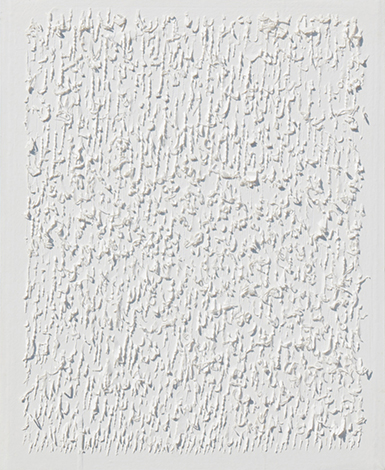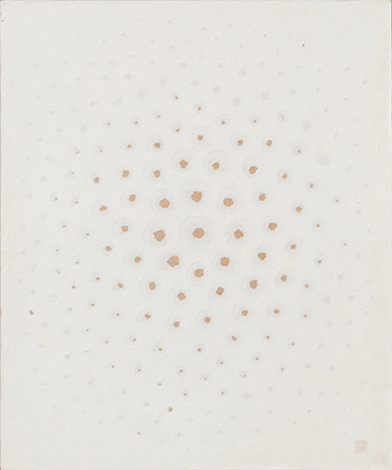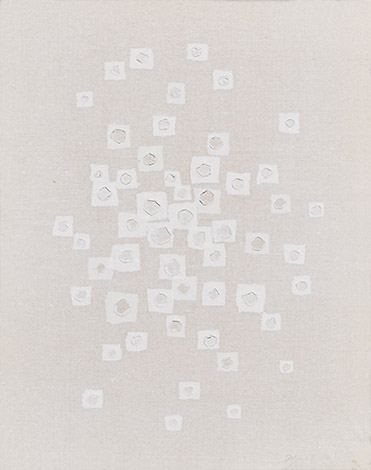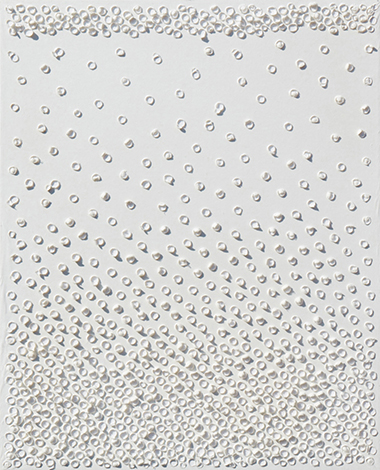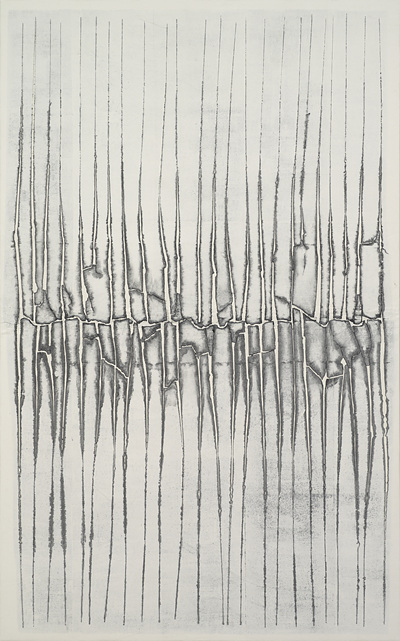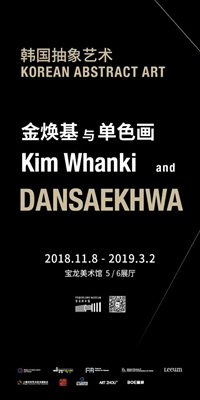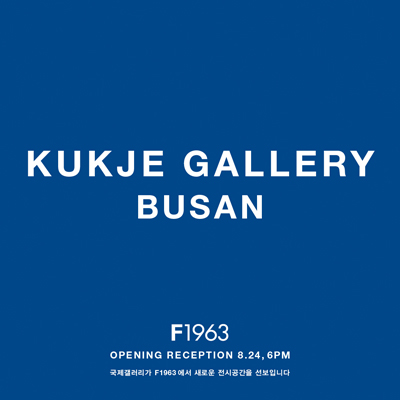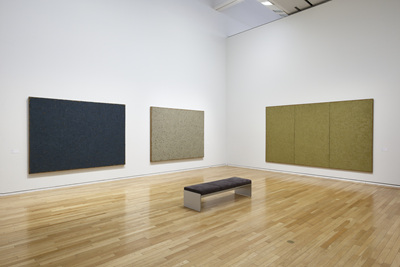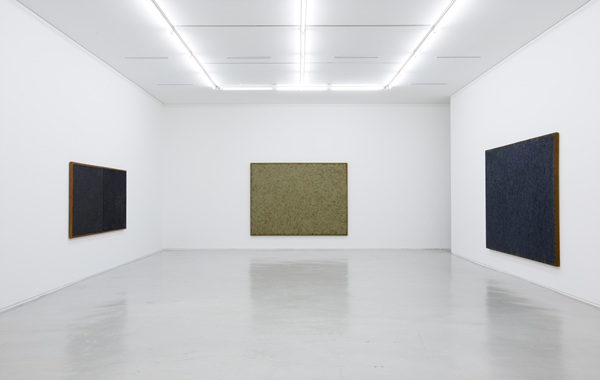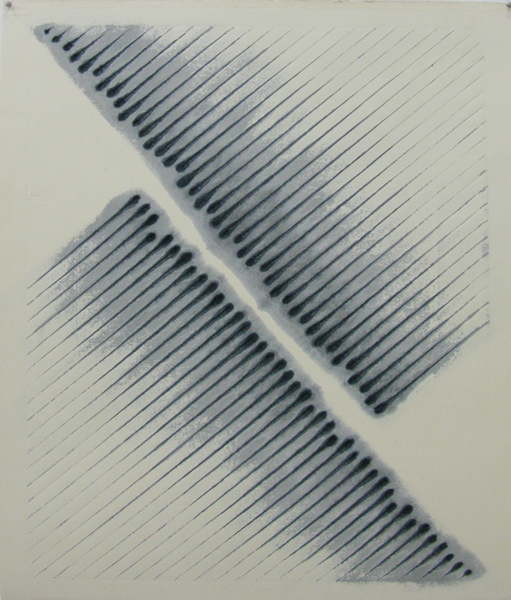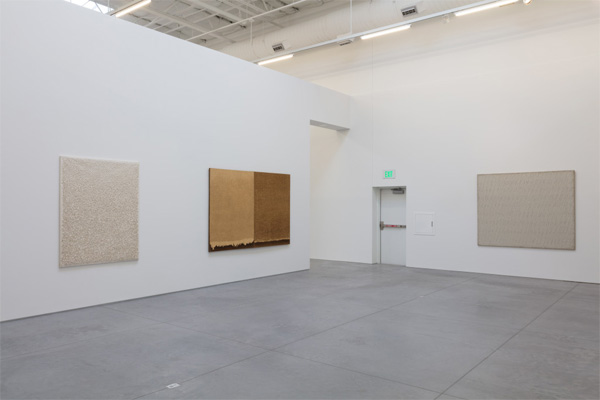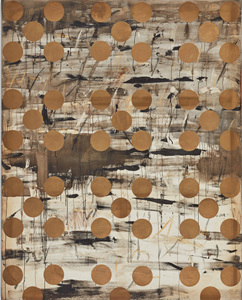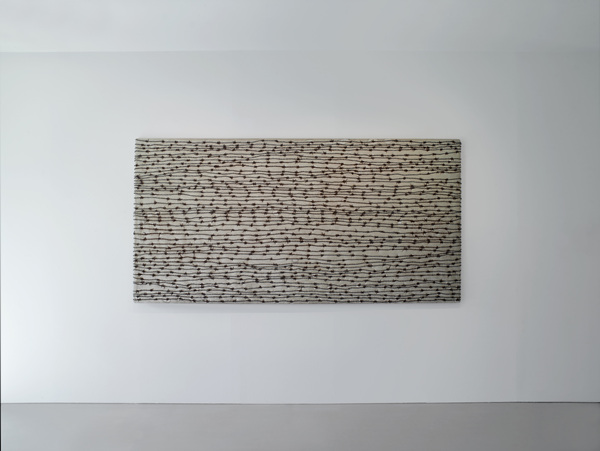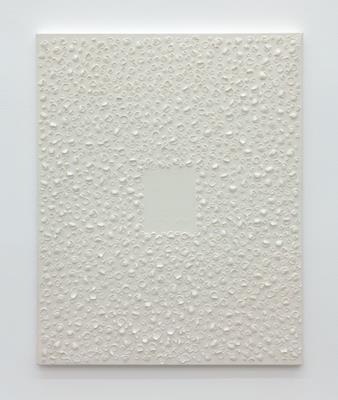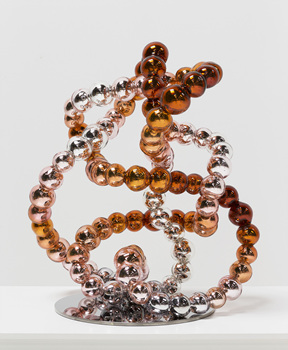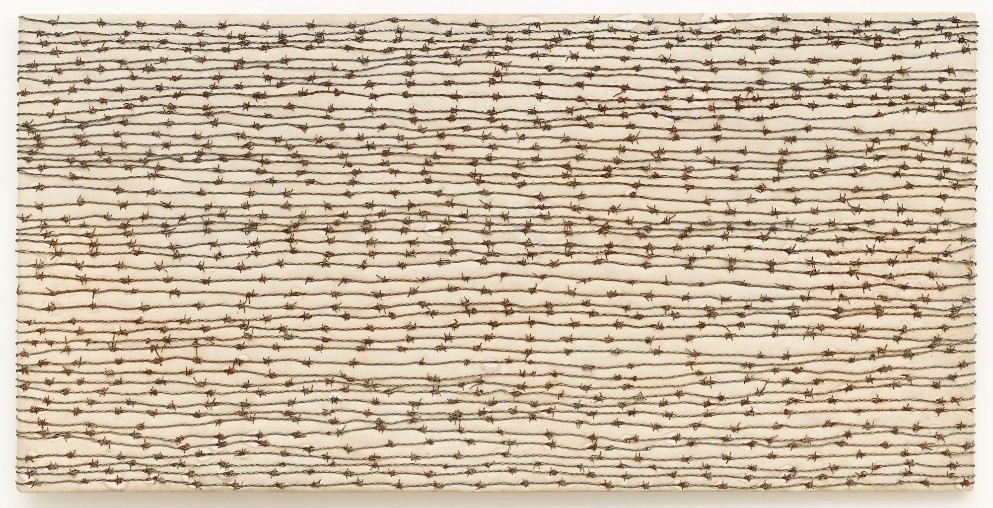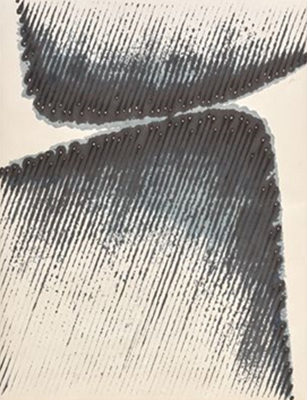 Various Whites | KUKJE GALLERY
Various Whites | KUKJE GALLERY
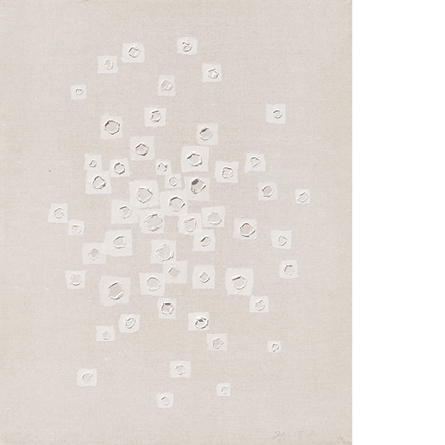
Mar 16, 2017 - Apr 30, 2017
K2
Seoul
INTRODUCTION
Kukje Gallery is pleased to present Various Whites, the second solo exhibition of one of the leading artists of the Dansaekhwa movement, Kwon Young-Woo. The exhibition will showcase Kwon's masterpieces ranging from his early practice to white hanji (Korean paper) works, providing an invaluable opportunity to understand how Kwon developed a new visual language by employing traditional mediums of oriental painting and combining them with modern techniques and conceptual rigor.
This exhibition derives its title from the historic exhibition Five Korean Artists, Five Kinds of White held at Tokyo Gallery in 1975, considered to be the first exhibition where Dansaekhwa was introduced internationally. As the title of this exhibition indicates, Kwon, whose works were presented in the show, has played an important role in the evolution of Danseakhwa since its onset. Early in his career, the artist was well known for his use of figurative abstraction and Chinese ink, a common oriental medium. It was his background in this traditional idiom that highlighted the decisive break he made in 1962 when he decided to use hanji as his primary medium. Various Whitestraces Kwon’s artistic trajectory, presenting his early oriental painting from the 50s and his hanji works on panel in the early 70s. The works from this mid-career period are notable for the way they investigate different formative aesthetics within their composition, and the context they give to his later white hanji works—produced since the mid-70s. Especially in these white hanji works, Kwon renounced the use of the brush and the traditional emphasis on drawing and painting, and opted to use his hands and handmade tools to cut, tear, puncture, and glue the paper together; in so doing, he put repetitive action and the paper’s materiality and tactility at the forefront of his practice. His focus on the hanji’s delicate layered texture led to three-dimensional shapes and rhythmic compositions that fill the entire surface, and his innovative techniques were praised for reinvigorating themes of oriental painting and creating a new vocabulary, thereby expanding its definition.
Kwon Young-Woo (1926-2013) entered Seoul National University in 1946 in the first class of the College of Fine Arts and studied oriental painting. He received his MFA from the same school in 1957. He taught at the School of Art, Chung-Ang University from 1964 to 1978 before moving to Paris, where he spent about ten years fully devoted to his studio practice. He has had solo exhibitions in major venues including Jacques Massol Gallery, Paris (1976); Ho-Am Art Museum, Seoul (1990); National Museum of Modern and Contemporary Art, Korea (1998); Seoul Museum of Art (2007) and Kukje Gallery, Seoul (2015). His work has also been featured in international biennials and group exhibitions, such as Tokyo Biennale (1965); São Paulo Art Biennial (1973); Five Korean Artists, Five Kinds of White at Tokyo Gallery (1975); Dansaekhwa, an official collateral event of the 56th Venice Biennale (2015) andWhen Process Becomes Form: Dansaekhwa and Korean Abstraction at Boghossian Foundation, Brussels (2016). His works are included in the collections of major art institutions, such as National Museum of Modern and Contemporary Art, Korea; Seoul Museum of Art; Leeum, Samsung Museum of Art, Seoul; and the British Museum, London.
국제갤러리는 2017년 3월 16일부터 4월 30일까지 대표적인 단색화 작가 권영우의 개인전 《Various Whites》를 개최한다. 2015년의 개인전에 이어 국제갤러리에서 두 번째로 열리는 이번 전시는 작가의 백색 한지(韓紙) 작품을 주로선보인다. 동양적 재료를 현대적으로 활용하여 새로운 조형언어를 구축한 권영우의 작업의 궤적을 아우르는 이번 전시는 그의 폭넓은 작품세계를 이해할 수 있는 소중한 기회를 제공한다.
국제적 주목을 받는 단색화의 시초가 된 1975년 동경화랑에서의 《한국 5인의 작가, 다섯 가지 흰색》전의 제목을 인용한 이번 전시는 권영우가 단색화 작가로서 널리 알려지게 된 전환을 보여준다. 동양화를 전공한 권영우는 초기에는수묵으로 작업하며 구상적 추상의 일 막(幕)을 이루었고, 1962년을 전후하여 필묵을 버리고 한지를 작품제작의 주요 매체로 사용하기 시작했다. 이번 전시는 그의 초기 동양화 작품에서부터 패널에 한지를 붙여 다양한 조형성을 탐구한70년대 초 작품, 그리고 백색 한지 작품을 선보이며 작가의 작업 전환의 궤적을 좇는다. 특히 70년대 중반부터 시작된 한지 작업에서 그는 종이 위에 그림을 그리는 화가의 기본 행위를 배제하고, 대신에 주로 손톱이나 직접 제작한 도구를이용하여 종이를 자르고, 찢고, 뚫고, 붙이는 행위 등을 통해 작가의 반복적인 행위와 종이의 물질성과 촉각성을 작업의 중심에 놓았다. 권영우는 여러 겹으로 겹쳐진 한지로 섬세한 재질감을 강조하면서 종이 위에 만들어진 입체감과리듬으로 조형성을 구성하였는데, 이는 동양화의 매체를 재조명하여 동양화의 영역을 초월한 새로운 문법을 만든 것이라 평가된다.
권영우(1926-2013)는 1946년 서울대학교 미술대학의 첫 입학생이 되어 동양화를 전공하였고, 1957년 동 대학원에서 석사학위를 받았다. 1964년부터 1978년까지 중앙대학교 예술대학 교수로 부임하여 학생들을 가르치다가 1978년부터1989년까지 작품활동에 전념하기 위해 프랑스 파리로 이주한 후 10여 년 동안 체류하였다. 1976년 파리 자크마솔 갤러리, 1990년 호암미술관, 1998년 국립현대미술관 과천관, 2007년 서울시립미술관, 2015년 국제갤러리 등에서 개인전을가졌고, 1965년 도쿄비엔날레, 1973년 상파울로비엔날레, 1975년 동경화랑 《한국 5인의 작가, 다섯 가지의 흰색》전, 2015년 베니스비엔날레 공식 병행전시 《단색화》, 2016년 브뤼셀 보고시안 재단에서 열린 《과정이 형태가 될 때:단색화와 한국 추상미술》 등 주요 해외전시에 참여한 바 있다. 작품의 주요 소장처로는 국립현대미술관, 서울시립미술관, 삼성미술관 리움, 런던 대영박물관 등이 있다.
This exhibition derives its title from the historic exhibition Five Korean Artists, Five Kinds of White held at Tokyo Gallery in 1975, considered to be the first exhibition where Dansaekhwa was introduced internationally. As the title of this exhibition indicates, Kwon, whose works were presented in the show, has played an important role in the evolution of Danseakhwa since its onset. Early in his career, the artist was well known for his use of figurative abstraction and Chinese ink, a common oriental medium. It was his background in this traditional idiom that highlighted the decisive break he made in 1962 when he decided to use hanji as his primary medium. Various Whitestraces Kwon’s artistic trajectory, presenting his early oriental painting from the 50s and his hanji works on panel in the early 70s. The works from this mid-career period are notable for the way they investigate different formative aesthetics within their composition, and the context they give to his later white hanji works—produced since the mid-70s. Especially in these white hanji works, Kwon renounced the use of the brush and the traditional emphasis on drawing and painting, and opted to use his hands and handmade tools to cut, tear, puncture, and glue the paper together; in so doing, he put repetitive action and the paper’s materiality and tactility at the forefront of his practice. His focus on the hanji’s delicate layered texture led to three-dimensional shapes and rhythmic compositions that fill the entire surface, and his innovative techniques were praised for reinvigorating themes of oriental painting and creating a new vocabulary, thereby expanding its definition.
Kwon Young-Woo (1926-2013) entered Seoul National University in 1946 in the first class of the College of Fine Arts and studied oriental painting. He received his MFA from the same school in 1957. He taught at the School of Art, Chung-Ang University from 1964 to 1978 before moving to Paris, where he spent about ten years fully devoted to his studio practice. He has had solo exhibitions in major venues including Jacques Massol Gallery, Paris (1976); Ho-Am Art Museum, Seoul (1990); National Museum of Modern and Contemporary Art, Korea (1998); Seoul Museum of Art (2007) and Kukje Gallery, Seoul (2015). His work has also been featured in international biennials and group exhibitions, such as Tokyo Biennale (1965); São Paulo Art Biennial (1973); Five Korean Artists, Five Kinds of White at Tokyo Gallery (1975); Dansaekhwa, an official collateral event of the 56th Venice Biennale (2015) andWhen Process Becomes Form: Dansaekhwa and Korean Abstraction at Boghossian Foundation, Brussels (2016). His works are included in the collections of major art institutions, such as National Museum of Modern and Contemporary Art, Korea; Seoul Museum of Art; Leeum, Samsung Museum of Art, Seoul; and the British Museum, London.
국제갤러리는 2017년 3월 16일부터 4월 30일까지 대표적인 단색화 작가 권영우의 개인전 《Various Whites》를 개최한다. 2015년의 개인전에 이어 국제갤러리에서 두 번째로 열리는 이번 전시는 작가의 백색 한지(韓紙) 작품을 주로선보인다. 동양적 재료를 현대적으로 활용하여 새로운 조형언어를 구축한 권영우의 작업의 궤적을 아우르는 이번 전시는 그의 폭넓은 작품세계를 이해할 수 있는 소중한 기회를 제공한다.
국제적 주목을 받는 단색화의 시초가 된 1975년 동경화랑에서의 《한국 5인의 작가, 다섯 가지 흰색》전의 제목을 인용한 이번 전시는 권영우가 단색화 작가로서 널리 알려지게 된 전환을 보여준다. 동양화를 전공한 권영우는 초기에는수묵으로 작업하며 구상적 추상의 일 막(幕)을 이루었고, 1962년을 전후하여 필묵을 버리고 한지를 작품제작의 주요 매체로 사용하기 시작했다. 이번 전시는 그의 초기 동양화 작품에서부터 패널에 한지를 붙여 다양한 조형성을 탐구한70년대 초 작품, 그리고 백색 한지 작품을 선보이며 작가의 작업 전환의 궤적을 좇는다. 특히 70년대 중반부터 시작된 한지 작업에서 그는 종이 위에 그림을 그리는 화가의 기본 행위를 배제하고, 대신에 주로 손톱이나 직접 제작한 도구를이용하여 종이를 자르고, 찢고, 뚫고, 붙이는 행위 등을 통해 작가의 반복적인 행위와 종이의 물질성과 촉각성을 작업의 중심에 놓았다. 권영우는 여러 겹으로 겹쳐진 한지로 섬세한 재질감을 강조하면서 종이 위에 만들어진 입체감과리듬으로 조형성을 구성하였는데, 이는 동양화의 매체를 재조명하여 동양화의 영역을 초월한 새로운 문법을 만든 것이라 평가된다.
권영우(1926-2013)는 1946년 서울대학교 미술대학의 첫 입학생이 되어 동양화를 전공하였고, 1957년 동 대학원에서 석사학위를 받았다. 1964년부터 1978년까지 중앙대학교 예술대학 교수로 부임하여 학생들을 가르치다가 1978년부터1989년까지 작품활동에 전념하기 위해 프랑스 파리로 이주한 후 10여 년 동안 체류하였다. 1976년 파리 자크마솔 갤러리, 1990년 호암미술관, 1998년 국립현대미술관 과천관, 2007년 서울시립미술관, 2015년 국제갤러리 등에서 개인전을가졌고, 1965년 도쿄비엔날레, 1973년 상파울로비엔날레, 1975년 동경화랑 《한국 5인의 작가, 다섯 가지의 흰색》전, 2015년 베니스비엔날레 공식 병행전시 《단색화》, 2016년 브뤼셀 보고시안 재단에서 열린 《과정이 형태가 될 때:단색화와 한국 추상미술》 등 주요 해외전시에 참여한 바 있다. 작품의 주요 소장처로는 국립현대미술관, 서울시립미술관, 삼성미술관 리움, 런던 대영박물관 등이 있다.
WORKS
|
Untitled |
Untitled |
|
|
Untitled |
Untitled |
|
|
Untitled (P75-7) |
Untitled |
|
INSTALLATIONS
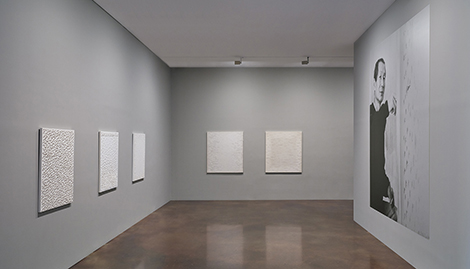
|
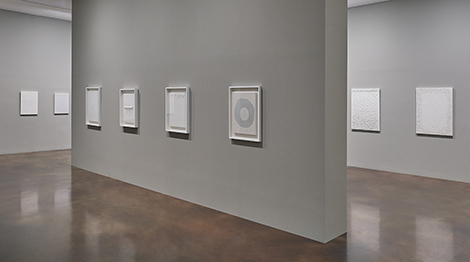
|
|
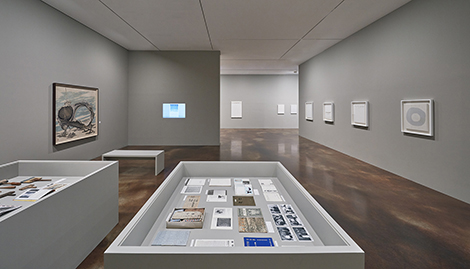
|
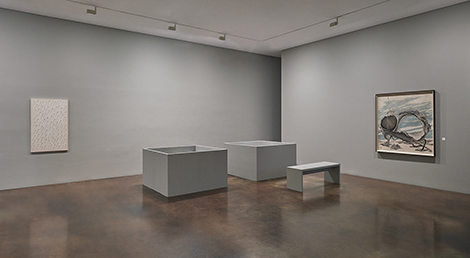
|
|
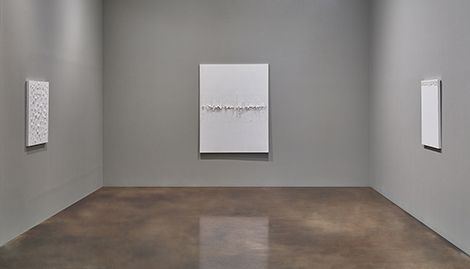
|
VIDEOS
|
Installation Video |
Teaser Trailer |
|
PUBLICATIONS
| Kwon Young-Woo: Various Whites |
MEDIA COVERAGE
일간지
한국 白色畵의 전설을 만나다
Apr 13, 2017 조선일보
“작업 안하면 살 이유가 없다”…故권영우 개인전
Mar 20, 2017 헤럴드경제
Korean art fascinates Hong Kong
Mar 20, 2017 The Korea Times
고(故) 권영우 화백의 1958년 '국전' 수상작에 얽힌 사연은?
Mar 17, 2017 news 1
흰색 화선지에 품은 세상 권영우 화백의 ‘백색마술’
Mar 16, 2017 한국경제
동양화가에서 한지 화가로…'경계를 허문 작가' 권영우 개인전
Mar 14, 2017 연합뉴스
동·서양화 경계 허문 ‘白色畵 이단아’를 돌아보다
Mar 13, 2017 문화일보
찢고 긁고 뚫어야 나왔다…한지에 빠졌던 화가 권영우
Mar 13, 2017 Newsis
